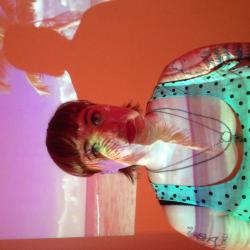Iceland is well known for boasting an impressive art community of every sort and for every walk of life, and dance is no exception. Although the size of the dance community is directly proportional to the size of the country, the quality and breadth of options is nothing to shake a stick at. After taking a nice summer vacation, the city’s movers and shakers are coming back this autumn with new shows, new artists and the gumption to power through the tough times.
The Big Kahunas
Last April, the Iceland Dance Company’s 2008–2009 season closed with a momentous performance in the Blue Lagoon choreographed by Erna Ómarsdóttir. The audience were literally immersed in the show’s physical setting, raising the bar on drawing the spectator into the performance. This has set a tall order for the company in the upcoming season, but they are not shying away from the task, going onward and upward. “The season ahead is quite ambitious,” says Jóhanna Pálsdóttir, marketing director at ID, “what we’re trying to do is offer something for everyone, for young and old, for people who have just started to attend dance and people who are really into it.”
They kick off in September with their annual Family Performance, which puts together a collage of their best shows and favourite pieces. The family oriented, kid friendly show will be on Sunday afternoons in September and October and free for children under 12, making it a great weekend activity. They will also travel up to Akureyri in October for two performances, bringing three of their most popular pieces to the Northern capital. In November, they’ll delve deeper into the avant-garde with Jam Week, a four night run of two-for-one performances. These performances will be more experimental and unpredictable, where the choreographers will have to work with whatever happens. It may appeal to a more experienced dance fan or to the daring uninitiated who is up for a more challenging and exciting show.
Throughout the month of December, ticket holders at the Reykjavík City Theatre will be treated to a twenty minute dance appetizer prior to the play they have come to see for only 490 ISK extra. This will give the theatre lover a chance to become a dance lover as well. The Company will then take a brief lull as they prepare for their big February show choreographed by Alan Lucien Oyen, one of Norway’s bright young talents. Oyen is reputed for a very lyrical style, incorporating elements of speech into his beautiful, flowing pieces. Finally, something to look forward to in the long-term will be the closing performance in May 2010, Jóhann Jóhannsson’s Fordlandia with the Reykjavík Symphony. This performance will be put on during the Reykjavík Arts Festival and will be a spellbinding way to close the year and start next summer.
Gotta Dance NOW?
The first week of September will be a big one for the little guys. The Reykjavík Dance Festival is coming back for its 7th year from September 3rd to the 7th at the Hafnarfjörður Theatre. With independent choreographers and performers out the wazoo, and presenting no less than six new Icelandic dance pieces, they will also continue their goal of bringing contemporary dance into the public eye with two Dance Parades in downtown Reykjavík.
In addition, it will be attended by several directors of international dance companies and festivals. The festival is one of the few opportunities that independent choreographers and dancers in Iceland have to show their work, so it is a great chance for them to be seen by the big wigs, as well as a great chance to expose new people to modern dance who might not get to otherwise.
Halla Ólafsdóttir, a founding member of Samsuðan & Co., has been involved with the festival for the past two years and will be performing in ‘Grease, The Deleted Scenes’ this year. She describes the festival as a true celebration of dance and a way for the dance community to collaborate and pool their resources. “What I think is very exciting about the Icelandic dance scene right now is that people are extremely willing and excited about doing things,” says Halla, “the community really wants to share and make things happen.”
It is still a matter of economics though—they only received funding from the municipal government, but not the state—so they are operating on a much smaller budget than previous years. All the performers are volunteering their works, and all the shows will be free with a request for donations to help fund next year’s festival. For those without wheels to get to Hafnarfjörður, there will be a free bus departing from downtown at Karamba (Laugavegi 22) forty-five minutes before each performance and coming back after.
Buy subscriptions, t-shirts and more from our shop right here!
















